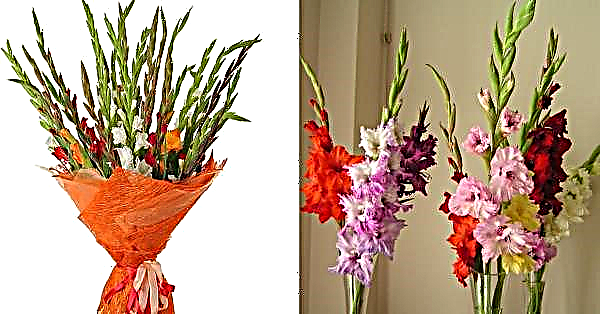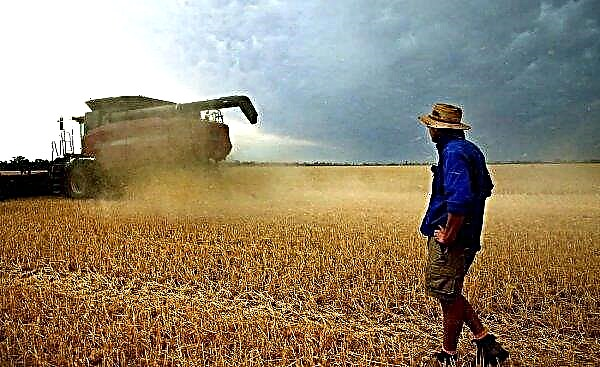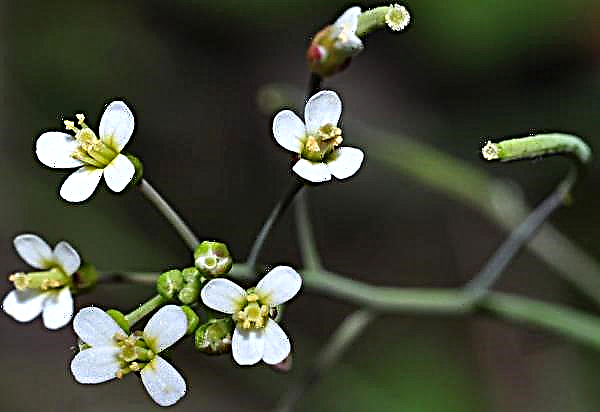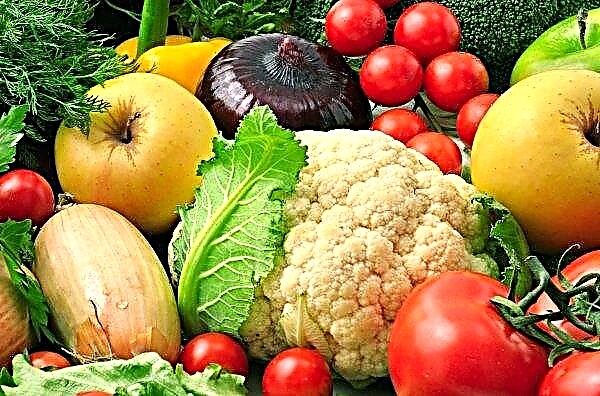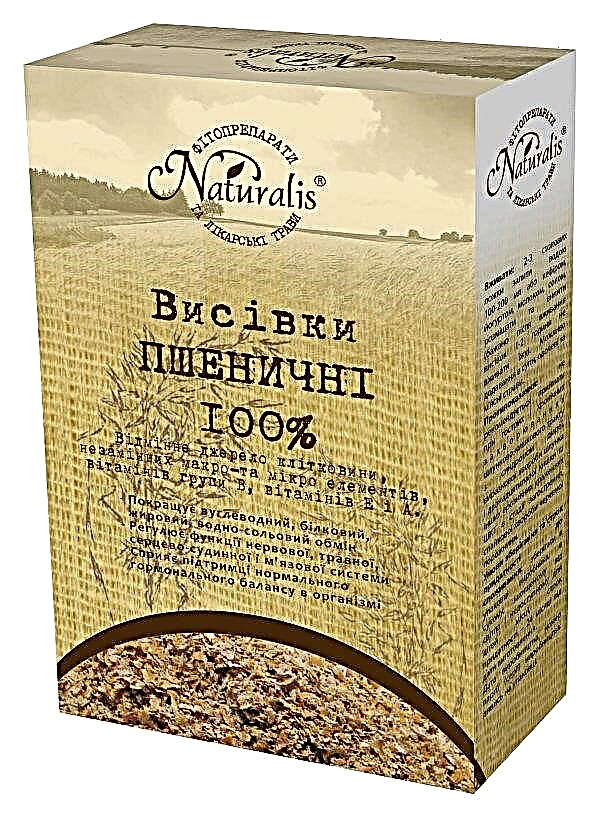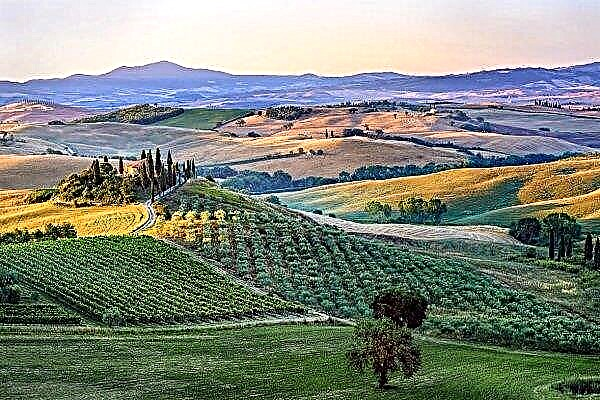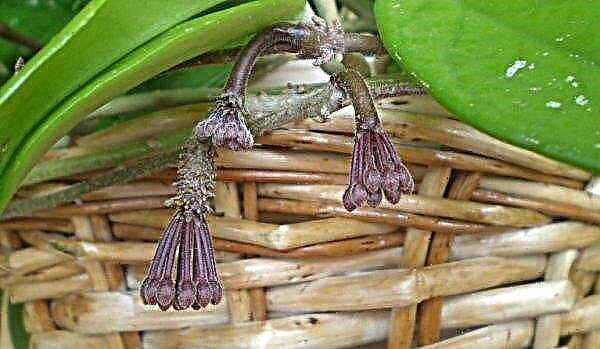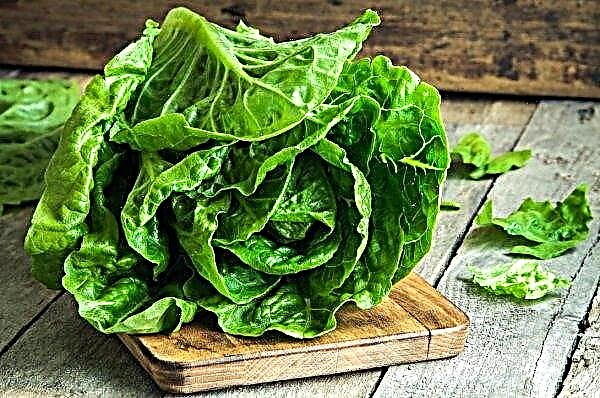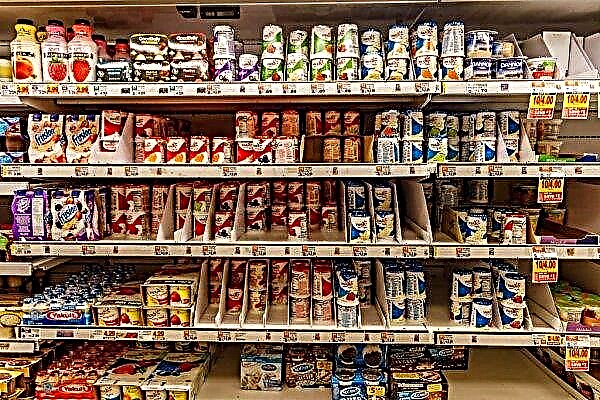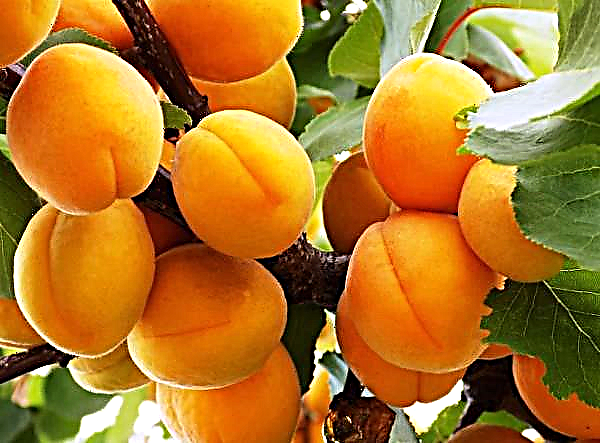Parsley, depending on the variety, is grown for spicy vitamin greens or fragrant root. Most often, it is for the sake of bright green leaves, which have a rich composition and bring many benefits to human health. Sometimes a gardener discovers a yellowed green that has lost its bright color. We will get acquainted with the causes of yellowing of parsley, as well as measures to combat and prevent this phenomenon.
Why does parsley turn yellow in the garden?
Parsley generally refers to unpretentious crops, but sometimes its leaves begin to turn yellow right on the bed. Such parsley loses its taste, juiciness and usefulness. It is unlikely that you will want to eat yellowed greens, but this process can be stopped if the cause of this phenomenon is correctly identified and eliminated.
The main factors causing yellowing of parsley are:
- Water scarcity. The lack of moisture in the heat leads to the fact that the greens coarsens and loses its juicy color, turns yellow.
- Nutrient deficiency. The most common cause of yellowing of this plant is a lack of nitrogenous compounds. It is necessary to give a plant top dressing. It is also necessary to lime acidic soils (starting at 5.5 pH), otherwise parsley loses its ability to properly absorb food.
- Disease. This culture can be attacked by fungal and viral diseases that affect the greenery, and its color changes.
- Pests. The plant begins to dry and turn yellow due to the suction of juices from the plant by some insects.
Common parsley diseases
There are a number of diseases of umbrella crops, which include parsley, causing yellowing of its leaves.
Did you know? There are varieties of parsley resistant to powdery mildew. Of the leaf varieties, this is the Italian giant, Festival (also resistant to Septoria), Lord, Novas. Root varieties of parsley that are resistant to this disease are Atika, Olomunskaya, Yadran.
Powdery mildew
Its causative agent is Erysiphe umbelliferarum dBy, a marsupial. Parsley is struck by its shape f. apii. This fungal disease manifests itself by the appearance of a whitish coating on the green mass of parsley. It grows over time, and on it appear black blotches of fruiting bodies. Then the affected areas darken, become brown and dry. At the very end, the leaves begin to crumble easily.
The defeat of this fungus usually comes from infected plant debris. Warm and humid weather contributes to its development.

Stolbur
The causative agent of this viral disease is the intracellular parasite Phytoplasma. It causes chlorosis mainly along the edge of the foliage of the lower tiers. Then the leaves from these edges begin to turn red. The affected plant can bloom in the first year of life, but inflorescences form with flaws. Parsley inhibits growth, the quality of its greens and roots deteriorates.
Pathogens are insects of the circadian insect, so this disease appears in late July or early August.
Black rot
The causative agent of black rot (another name is alternariosis) of parsley is the fungus Alternaria radicina Meier et al. The root neck of the affected plant blackens, and then all the greens begin to turn yellow and dry. In wet weather, the foliage rots and becomes covered with a light greenish-brown coating.
Usually, damage occurs in conditions of high humidity and heat. The optimum temperature for the fungus is + 28 ° C. The source of the disease can be seeds, residues in the soil of diseased plants, or infected roots planted to receive seeds. On storage of parsley roots, depressed spots appear during storage, the affected part of the plant darkens.

Septoria
Septoria, or spotting, is another fungal disease that occurs as a result of the activity of the fungus Septoria petroselini Desm. The leaves (from all sides), leaf petioles and the stem are affected. Many spots appear on them, first brown, and then off-white in color with a brownish border. Over time, black dots appear in their center. The disease manifests itself from mid-July and first affects the lower part of the foliage, gradually spreading upwards. Parsley turns yellow and fades.
Infection can come from air, soil, plants affected by it, from seeds.
Rust
This fungal disease is usually observed on the top of the foliage. Its causative agent is the fungus Puccinia petroselini Lindr. It appears in the form of rusty color pads. Their location can be single or group. The disease eventually passes from leaves to leaf petioles and stems. During the growing season, several generations of spores are formed, which are easily spread. The diseased plant turns yellow and dries. The teliospores of the fungus winter on plant debris.
Did you know? In 100 g freshly picked fresh parsley from a garden, there is a daily dose of vitamin A and beta-carotene, 166% of the daily norm of vitamin C and 13 norms of vitamin K.
Early burn
An early burn, or cercosporosis, is a disease caused by the fungus Cercospora apii Fres or Ceposrora depressa (Veg. Et. Vg.) Wass. A scattering of small yellowish spots appears on the greenery, over time they acquire a dirty brown color, and then lighten a little. On the stems and leaf petioles, the spots are elongated and depressed. With increased humidity, a gray coating appears on these spots. The development of the affected plant slows down, the foliage turns yellow and dries.
Infection occurs from the remains of plants or seeds affected by the mycelium of the pathogen, in conditions of high humidity.
Parsley Pests
Yellowing of parsley can also occur due to insect pests that feed on plant juices.
Did you know? The natural enemies of aphids are ladybugs, lacewings and grunts. But ants, on the contrary, help aphids, transfer it to optimal plants for food, protect. This is due to the fact that ants are very fond of eating a paddy - the sweet liquid that this insect secrete.
Carrot leaf
A small insect several millimeters long, light green in color. Leaf larvae have a green-yellow color. Adult leaf flies and larvae drink the juice of the plant, because of which it turns yellow. Parsley leaves twist, the plant grows poorly.

Stem nematode
Small filamentous worms no more than 1.7 mm in length. The nematode larvae are even smaller. This pest affects many crops, including parsley. Larvae and adult worms suck plant juices, causing their deformation and growth retardation.

Carrot fly
It is a small insect about 5 mm long. The body has a black color, and the head is yellow-green. A fly lays eggs near the roots, and larvae, when they are born, begin to eat roots, damaging the plants. Parsley begins to turn yellow, and also slows down growth and development. Larvae have a brilliant yellowish color. These insects love high humidity.
Gourd aphids
A small flying insect about 1-2 mm long. The color ranges from yellow to black, and the larvae have a white-green color. Insects usually appear in late June. Aphids and its larvae feed on plant juices, which also leads to its yellowing and wilting. The pest can also provoke the appearance of infectious and fungal diseases.

Methods for controlling diseases and pests
At the beginning of the disease, folk remedies can be used to get rid of it. If the disease has gone far or there is a massive defeat by insect pests, then more effective chemicals should be used.
Folk methods
In order for the greens to be environmentally friendly and healthy, it is recommended to combat diseases and pests using folk methods.
Consider them:
- Tobacco dust. Sprinkling such dust between the rows, you can remove many pests from the site, including aphids.
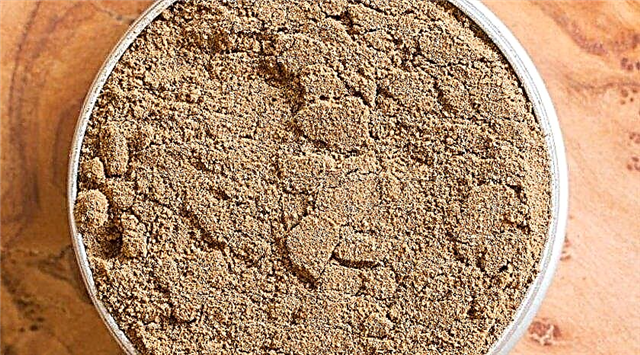
- To repel a carrot fly, you need to spray plantings orange peel infusion.

- Dandelion Flask. It helps against melon aphids. To make it, the leaves and roots of this plant should be soaked for 3 hours in warm water.

- Garlic infusion. It helps a lot against many pests. To make it, 1 head of chopped garlic must be poured with 2 liters of water. The solution is infused for a week, and then 50 ml of the resulting liquid are diluted with 10 liters of water. This infusion also helps with fungal diseases.

- Onion infusion. It repels pests and helps to cope with infectious and fungal diseases. To make a solution of onion bulbs should be chopped into gruel and mixed with water in a ratio of 1: 1. The solution is infused for 7-8 days. Then dilute 20 ml of infusion in 10 liters of water and spray the planted area.
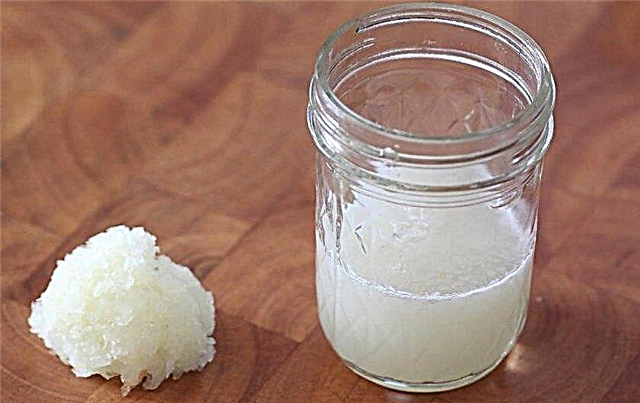
- Infusion of Onion Husk. Good for controlling aphids and other insects. For its preparation, 200 g of husk needs to be steamed 10 liters of boiling water and insist 15-16 hours. Then strain the solution and spray.

- Tobacco infusion. Repels insect pests well. Tobacco powder should be poured with hot water in a ratio of 1: 1 and infused for 24 hours. Then dilute with water 2 times, and for better adhesion add chopped laundry soap (40 g per 10 l).
Video: Cooking tobacco infusion
- Nettle infusion. It is used as a top dressing, and to strengthen the plant, increases resistance to many diseases. To cook it, you need 0.7 kg of fresh nettle to steam 5 liters of boiling water. Then place the container with the mixture in a warm place. Filter the abandoned solution (usually this process takes 5 days) through a sieve and dilute with water in a ratio of 1:10 for irrigation under the root. For spraying, dilute the solution in a ratio of 1:20.

Chemical treatment
Chemical agents are used against some diseases. So, to deal with powdery mildew, colloidal or ground sulfur treatments help; you can also use the Bayleton preparation. Against it, as well as other fungal diseases (rust, cercosporosis of leaves), the site is sprayed with copper chloride or 1% Bordeaux fluid. Processing is carried out with an interval of 10 days, and they are stopped 20 days before the collection of greens.
Chemical agents “Karbofos”, “Decis”, “Intavir” are used against aphids. Chemicals such as Iskra or Fitoverm help fight the carrot leaf. These preparations are diluted according to the instructions and sprayed at the rate of 1 liter of solution per 10 m² of plantings. If the area with parsley is small, then to enhance the effect, you can cover it with plastic wrap for 24 hours.Important! Do not abuse chemicals to control pests and diseases, as harmful elements do not always have time to decay, which adversely affects human health and the quality of greenery.
Against cicadas, which are carriers of the column, insecticides such as Confidor Extra, Tanrecom, or Aktara are used.

Prevention of diseases and pests on parsley
To avoid the appearance of diseases and pests, gardeners recommend such preventive measures:
- Follow agricultural cultivation techniques and arrange proper care - proper watering, top dressing, cultivation, removal of weed grass.
- Inspect the site in a timely manner and remove damaged plants so as not to infect the entire planting of greenery.
- If parsley grows in greenhouse conditions, it is necessary to maintain the air temperature not lower than + 20 ° С at night, and during the day - at +24 ... + 26 ° С. Regular ventilation of the greenhouse should also be carried out.
- Observe crop rotation. Do not plant this greens after dill, carrots, celery, fennel, caraway seeds. Good precursors are pumpkin crops, tomatoes, potatoes, onions, cabbage.
- Disinfect seed before planting. For this purpose, before planting, the seeds are placed for 30–40 minutes in a solution of potassium permanganate, and then dried.
- Choose disease-resistant varieties for planting.
- To do foliar preventive treatments - for example, using a 0.04% borax solution.
- Prepare the site for sowing. To do this, in the fall, you need to remove the remains of vegetation, dig deep into the soil and make fertilizers.
- Thin planting so that the plants do not obscure each other. This procedure will significantly reduce the risk of powdery mildew.
- Grow around the area of vegetation, the smell of which will scare away insect pests. These are garlic, onions, marigolds, calendula, mustard, mint, basil.
Important! Repeatedly or after other umbrella crops, parsley in the same place can be planted only after 4 years.
If you follow all the rules of growing and caring for parsley, then no pests and ailments will be scared of it, and culture will enrich your diet with healthy greens.








